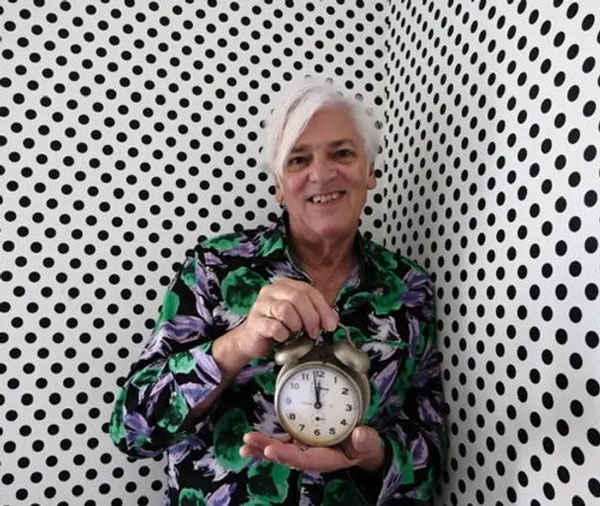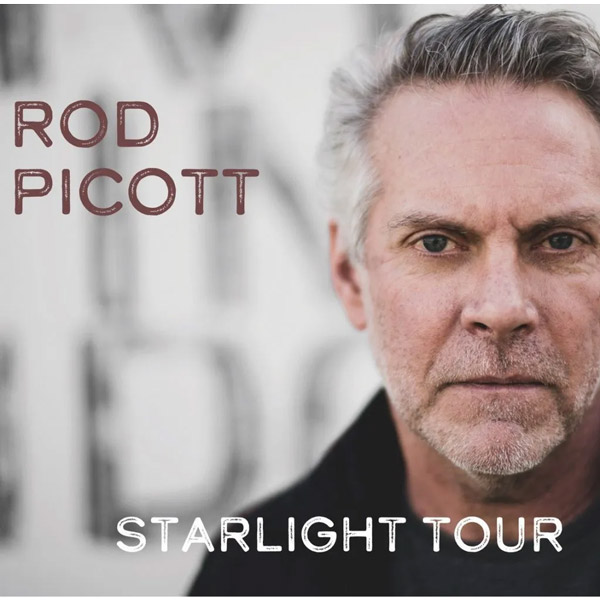By Spotlight Central, Photos by Love Imagery
originally published: 05/01/2016
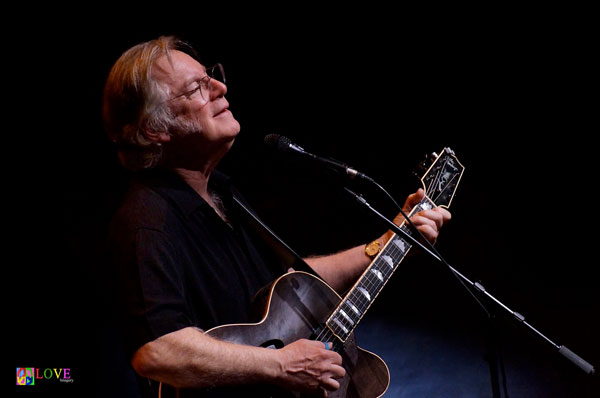
John Sebastian, founder of The Lovin’ Spoonful, performed on Saturday, April 23, 2016, at The Stockton Performing Arts Center on the campus of Stockton University in Galloway, NJ. At Stockton PAC, Sebastian not only provided the welcoming crowd who came to enjoy his music with a “one guy-one guitar” concert, he also provided them with a memory book full of stories.
And, oh, what stories he can tell.
Sebastian’s father, John Sr., was one of the world’s foremost harmonica players. As a result, John Jr. grew up in a house where it was not uncommon to have legendary musicians such as Woody Guthrie and Burl Ives stopping by to visit.
John’s mother, Jane, was a radio script writer; as a result, she knew a number of individuals who went on to make their mark in show business. In fact, John’s godmother was Vivian Vance, known to millions of television viewers as I Love Lucy’s Ethel Mertz.
As a child, John learned to play the harmonica and the autoharp. His burgeoning musical talents led him to join several noteworthy bands including The Even Dozen Jug Band with David Grisman (who later toured with the Grateful Dead) and Steve Katz (who eventually joined Blood Sweat & Tears); The Mug Wumps with Cass Elliot and Denny Doherty (who, along with John and Michelle Phillips, later went on to form The Mamas and the Papas); and, ultimately, The Lovin’ Spoonful, an American group with roots in blues, country, folk, and jug band that made musical history… all during the height of Beatlemania.
Sebastian was born in New York and grew up mainly in Italy and Greenwich Village. Nevertheless, he’s always held long-term ties to New Jersey.
Recalls Sebastian, “All my relatives were in either Camden or Philadelphia, so by the time I was eight or so, I was going to Camden pretty regularly. We went to Avalon a couple of summers, and that was the time when the Italian side of my family would get together and it was terrific.”
He also adds, “Haddonfield was where my cousins lived,and I would go almost every summer. I also used to go to school in Blairstown and that was five years where I was getting on the train in Hoboken and going out to Blairstown.”
Perhaps remembering the days when he and the Lovin’ Spoonful finally “made it big” and were invited to play high school gigs in the Garden State, Sebastian opened his latest Jersey performance at Stockton PAC in Galloway with a warm New Jersey greeting in the form of one of his newest compositions, the easy-going “I’m Satisfied.” The song comes from Sebastian’s folksy 2007 album of the same name, which he recorded with long-time musical friend, mandolinist David Grisman.
He followed that up with “Just Don’t Stop ’Til You’re All Worn Out” — a finger-snappin’ rockabilly number he originally recorded in 1996 with his group, John Sebastian and the J-Band — clearly demonstrating to the crowd at Stockton PAC that, at the age of 72, John Sebastian can still rock the house.
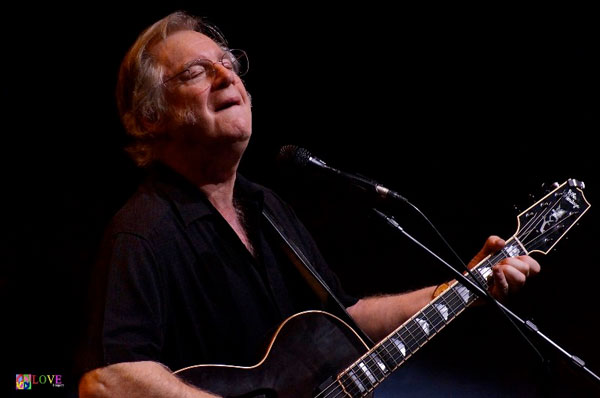
In addition to performing a winning cross-section of songs covering his entire career — from early classics like 1966’s endearing “Darling Be Home Soon” to more recent compositions like the winsome “Strings of Your Heart” — Sebastian delighted the crowd with his recollections, several about the early days of the band he helped create, The Lovin’ Spoonful.
According to Sebastian, when the Spoonful started out in the 1960s, they were considered a “folk rock” band but, as he divulged to the audience, “at the time, we didn’t care that much about folk music; we were more interested in the jukebox — songs like ‘Heatwave,’ by Martha Reeves and the Vandellas, with cool changes — chords that climb. I figured I could use those chords, but twice as fast” in an original composition.
And he did, in one song which became the Lovin’ Spoonful’s first major smash: 1965’s “Do You Believe in Magic.”
In the next few years, Sebastian followed that up with a string of Top 10 Billboard hits for the Lovin’ Spoonful including “You Didn’t Have to Be So Nice,” “Did You Ever Have to Make Up Your Mind,” “Summer in the City,” “Rain on the Roof,” and “Nashville Cats.”
But in order to write one of his more recent compositions, Sebastian told the crowd at Stockton PAC he needed to reach all the way back to his teenage years in order to reexperience the heartbreak of a lost love.
When he was just a teen, John took a young lady, Maria D’Amato, to a club in Greenwich Village on a date to see the Jim Kweskin Jug Band. There, he noticed Kweskin’s washtub bass player, Fritz Richmond, wearing a pair of “funny round glasses” — and, as he pointed out to the audience with a twinkle — “at the time, I made a ‘note to self’ reminding me how much I liked those glasses.”
At the club, he also couldn’t help noticing the striking presence of Kweskin’s imposing guitarist, Geoff Muldaur, on guitar. Unfortunately for John, his date happened to notice Geoff, too, and John went home alone. (Later, Geoff ended up marrying Maria, thus changing her name to Maria Muldaur — the moniker she used when going on to pop music stardom with her 1973 hit single, “Midnight at the Oasis.”)
Based on his feelings associated with that experience, Sebastian wrote a song which he dreamily performed — the folksy and nostalgic “Passing Fantasy.”
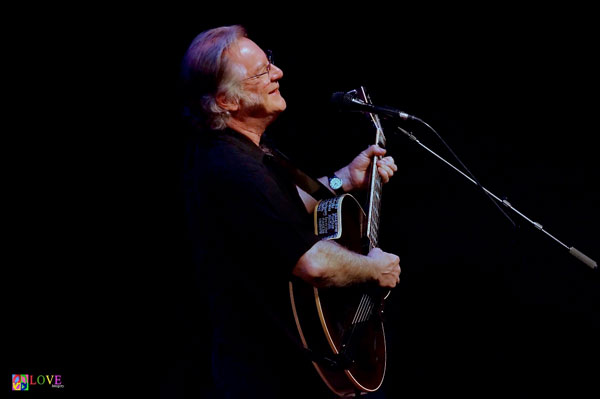
During an evening in which he deftly alternated between seasoned musical performances and engaging stories, Sebastian revealed to his fans that over the course of his six-decade career, his music has been in and out of favor many times.
For example, in the mid-1970s, after a cooling off period on the part of the public for his unique brand of of American folk-rock, Sebastian was nearly dropped by his music label. Explains Sebastian, “My record company was ready to dump me. I’d already seen the writing on the wall. I mean, I go into Warner Bros. and there’s Alice Cooper on a poster — ten feet tall.”
Given his experience writing for Broadway (Jimmy Shine), movies (What’s Up, Tiger Lily?), and television (Strawberry Shortcake), Sebastian was asked to write a theme song for a TV show about comedian Gabe Kaplan’s experiences as a teacher working with difficult students. As a self-described “genuine sweat hog” himself in school, Sebastian said he could identify with the characters, promising he could “write that song in five minutes,” a pledge which nearly turned out to be true. He finished the demo in one day and had the studio recording completed by the next. And at Stockton PAC, Sebastian had the audience smiling from ear to ear, singing back-up vocals to his lead on the theme from Welcome Back, Kotter, his chart-topping #1 solo hit, “Welcome Back.”
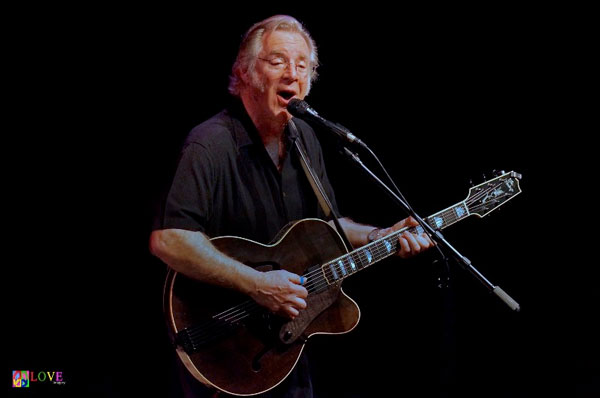
Over the years, Sebastian’s had many more extraordinary experiences which can make both him and his fans smile. One such situation took place in the summer of 1969 at Bethel, NY’s famous Woodstock “Music and Art Fair.” According to Sebastian — who just happened to be present as the festival merely as a spectator — the show’s producers, Mike Lang and Chip Monck, presented him with a dilemma.
Recalls Sebastian, “I had been standing on the stage and Mike and Chip Monck were standing there and we were under a tarp and I think we were talking about how we can’t put any amps on the stage. I was just a bystander at this point — it just so happened my old road manager was bringing in The Incredible String Band on a helicopter, so I was just there by surprise. And they said, ‘We need somebody to open for as long as it takes to sweep the water off the stage.’”
“So they’re saying this and I’m nodding my head, but I’m not looking at them — I’m looking to the side — and then I turn and I realize that they’re both looking at me! And I say, ‘But I don’t have a guitar!’ — at that particular time, that was my complaint — and Chip Monck goes, ‘You have time to get one — right now!’ And I did, luckily, have Timmy Hardin back there. He had an acoustic and he said I could borrow that.”
As a result of that completely unrehearsed, yet well-timed, performance, Sebastian earned legendary status when he was prominently featured in Woodstock, the film of the epic musical event, in addition to the Woodstock: Music from the Original Soundtrack album. In fact, his song, “I Had a Dream” was selected to open the three-volume set, and the composition — an instant classic — soon became the centerpiece song for his first solo recording, John B. Sebastian.
Other notable experiences for Sebastian include being invited by David Crosby, Stephen Stills, and Graham Nash to be the fourth member added to their trio, Crosby Stills and Nash, a job that ultimately went to Neil Young. Recalls Sebastian, “Stephen Stills asked me if I might consider being the group’s drummer saying, ‘Well, we don’t need a real drummer because we’re more of a guitar-centric band — and it would be really cool because then we’d have another songwriter contributing.’ And it was a fun thing to think about. But after a few days, my eventual conclusion was: I’ve managed to make this transition from the Lovin’ Spoonful and I don’t know if people will follow me through a solo career to a stopover with this other band. Today, that sort of thing is frequent but at that time, those things just didn’t happen.”
In addition to his drumming and songwriting talents — along with his guitar and autoharp acumen — he, like his father, possesses a world-class harmonica-playing ability. In fact, in the 1960s, he played harmonica on The Doors recording of “Roadhouse Blues” (under the pseudonym G. Puglese) and, in the 1970s, he played on the title track of CSN’s album, Déjà Vu.
And, after telling the audience a story about all the wonderful musical “toys” his father gave to him over the years — a collection of classic German-engineered harmonicas — Sebastian dazzled the crowd with his superb harmonica skills, sliding and gliding, lifting the audience to a magical world of musical fancy with the gutsy, bluesy sound emanating from his cherished childhood instrument.
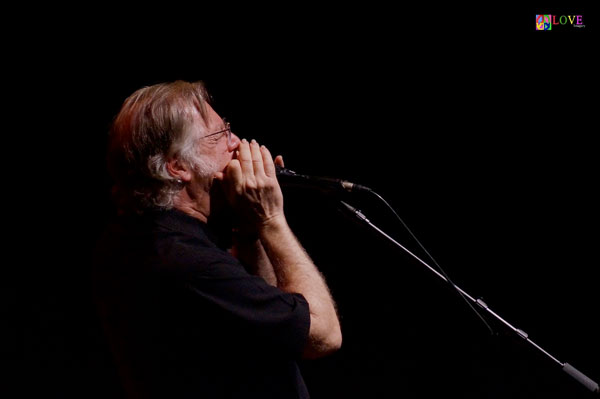
Sebastian concluded his evening of songs and stories with an anecdote about the time in the 1965 when The Lovin’ Spoonful went out on tour with the Supremes. According to Sebastian, all the performers traveled together by bus — “an actual school bus,” he noted — where after a “sweaty show” they couldn’t change clothes or take a shower. “At times,” he went on say, “the bus would break down” and he and his bandmates would “sit on the bumper and tell stories.” On one of those occasions, Spoonful guitarist “Zally” — Zal — Yanovsky, engaged John in an impassioned discussion about “What is happening to music?” As a result of this fiery exchange, disclosed Sebastian, Zal eventually “annoyed” him into writing another hit. The tune turned out to be “Daydream” — a song which brought the crowd at Stockton PAC to their feet — and reminded them why, for over a half-century, John Sebastian and his music have truly made them believe in magic.
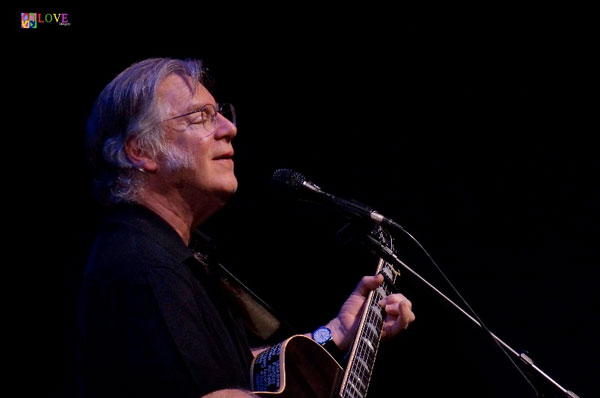
For more on John Sebastian and his music — including an upcoming performance on July 20 at the Paramount Theater in Asbury Park, NJ — go to johnsebastian.com. For more on future programming at Stockton PAC — including the Bay-Atlantic Symphony’s presentation of Chopin & Beethoven on May 22 — please check out stocktonpac.org.
Photos by Love ImagerySpotlight Central. Your source for Jersey entertainment news and reviews
Love Imagery Fine Art Photography. all you need. peace/love/flower/power
FEATURED EVENTS
Narrow results by date, categories, or region of New Jersey.

Trombone Shorty & Orleans Avenue
Thursday, November 21, 2024 @ 7:30pm
State Theatre New Jersey
15 Livingston Avenue, New Brunswick, NJ 08901
category: music
View event page for full information

Randall Goosby Returns: Renaissance Quartet
Thursday, November 21, 2024 @ 7:30pm
McCarter Theatre Center (Matthews Theater)
91 University Place, Princeton, NJ 08540
category: music
View event page for full information

Marshall Crenshaw - Up Close & Personal
Thursday, November 21, 2024 @ 7:30pm
Lizzie Rose Music Room
217 E. Main Street, Tuckerton, NJ 08087
category: music
View event page for full information
More events
Event Listings are available for $10 and included with our banner ad packages
EVENT PREVIEWS

Renaissance Quartet Brings Bold Innovation and Classical Mastery to McCarter Theatre on Thursday
(PRINCETON, NJ) -- Prepare to be captivated by the Renaissance Quartet, featuring violinists Randall Goosby and Jeremiah Blacklow, violist Jameel Martin, and cellist Daniel Hass. Graduates of the Juilliard School and mentored by the legendary Itzhak Perlman, the Quartet brings a unique blend of classical mastery and innovative flair to McCarter Theatre on Thursday, November 21, 2024 at 7:30pm. Known for reimagining chamber music traditions, this New York based ensemble combines technical excellence with a bold, forward-thinking approach that appeals to a diverse audience.
UPCOMING EVENTS
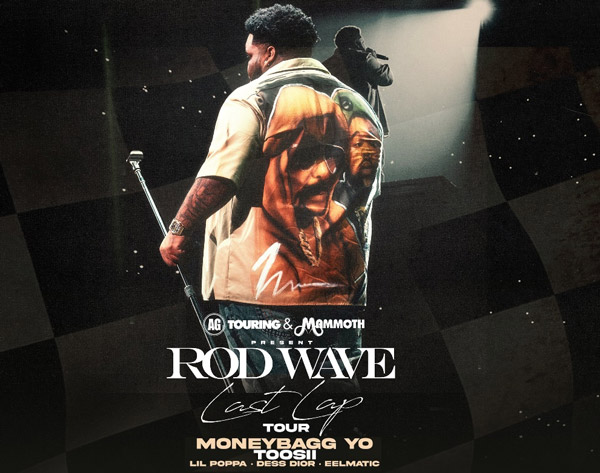
Rod Wave - Last Lap Tour comes to Prudential Center in December
(NEWARK, NJ) -- This Fall, AG Touring and Mammoth, Inc. proudly present the Rod Wave - Last Lap Tour. This large-scale multi-city outing will feature Rod Wave headlining 36 of North America's top arenas coast-to-coast. The tour will kick off on October 19 at Desert Diamond Arena in Phoenix, AZ visiting major markets across the country, including Newark’s Prudential Center on Tuesday, December 3, 2024 with special guests Moneybagg Yo, Toosii, Lil Poppa, Dess Dior and Eelmatic.














